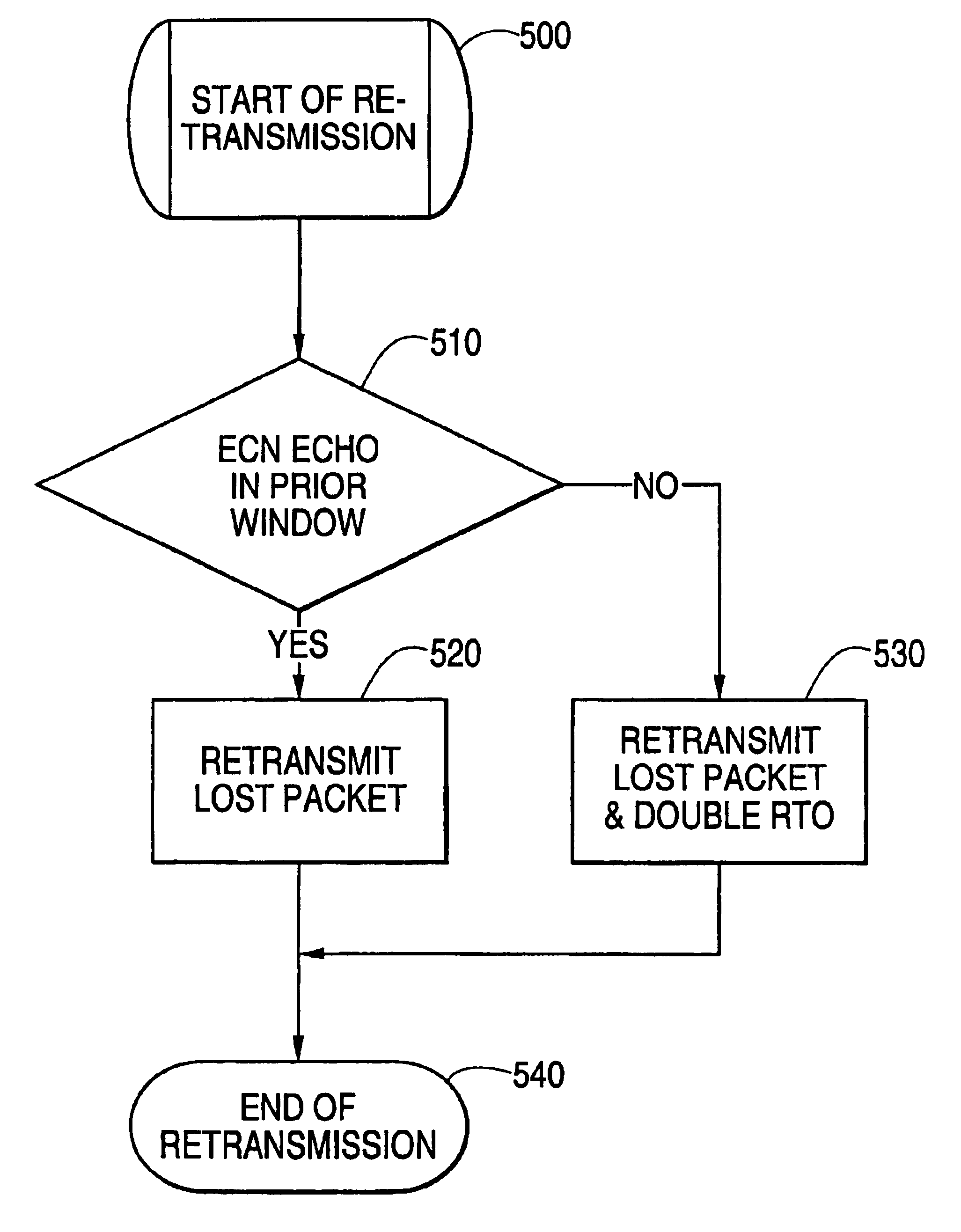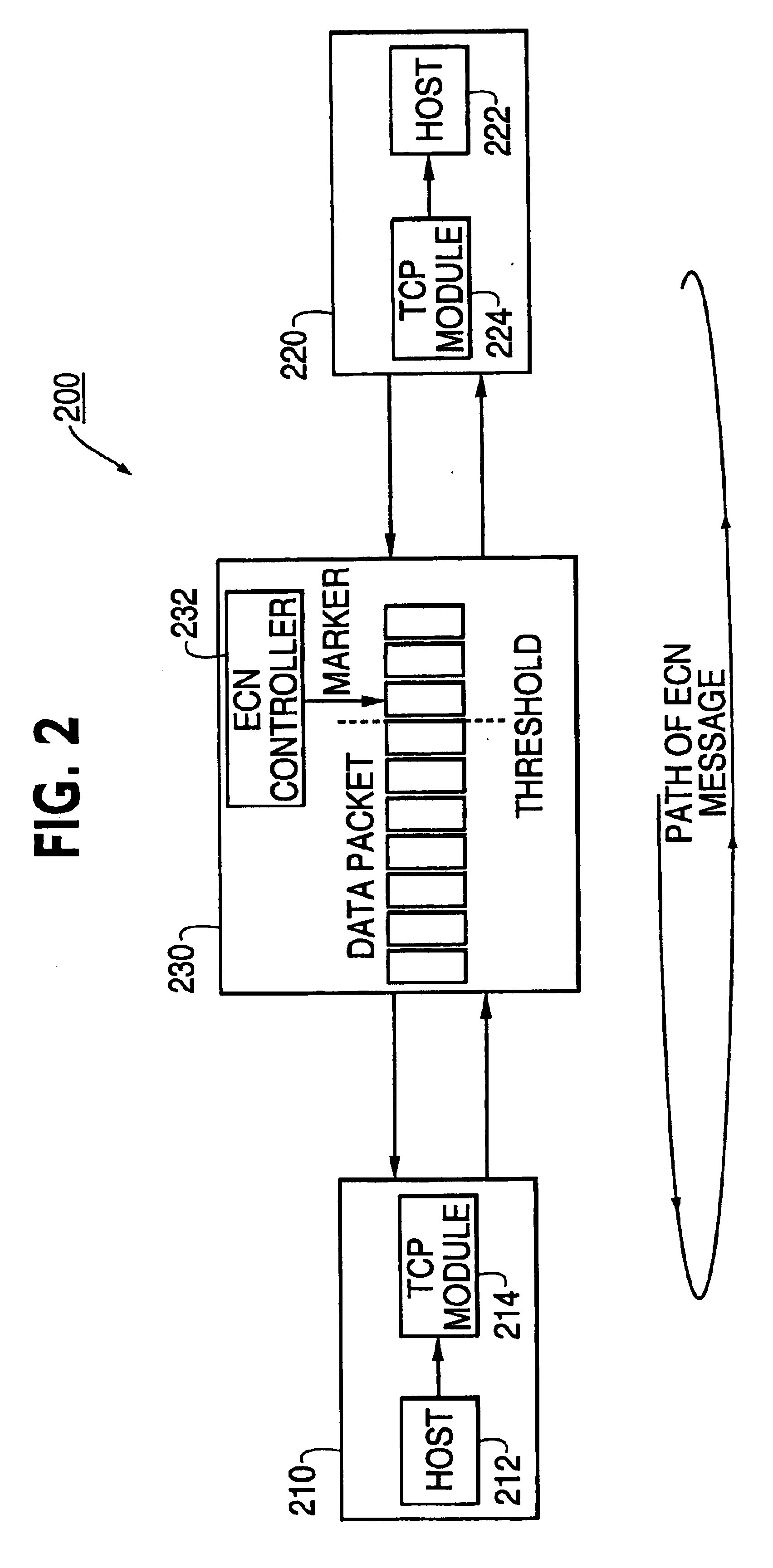Enhancement of explicit congestion notification (ECN) for wireless network applications
a wireless network and wireless network technology, applied in data switching networks, instruments, frequency-division multiplexes, etc., can solve the problems of source flooding destination, significant probability of problems from excess communication traffic, and inability to send messages as a continuous, uninterrupted stream of bits
- Summary
- Abstract
- Description
- Claims
- Application Information
AI Technical Summary
Problems solved by technology
Method used
Image
Examples
Embodiment Construction
The present invention is applicable for use with all types of data networks, including packet-switched networks, interconnected systems of such networks and transmission protocols used for data transfer between host systems in such networks. However, for the sake of simplicity, discussions will concentrate mainly on the use of Transmission Control Protocol (TCP) as a highly reliable host-to-host protocol between host systems in TCP / IP networks including the Internet, and in interconnected systems of such networks.
Attention now is directed to the drawings and particularly to FIGS. 1A-1B, a data packet for use in a packet-switched network according to an embodiment of the present invention is illustrated. As shown in FIG. 1A, a data packet 100 consists of a segment of data 140 and a small header 120 prepended to the data 140. The header 120 may contain an Internet Protocol (IP) header 120A and a Transmission Control Protocol (TCP) header 120B which follows the IP header 120A for suppl...
PUM
 Login to View More
Login to View More Abstract
Description
Claims
Application Information
 Login to View More
Login to View More - R&D
- Intellectual Property
- Life Sciences
- Materials
- Tech Scout
- Unparalleled Data Quality
- Higher Quality Content
- 60% Fewer Hallucinations
Browse by: Latest US Patents, China's latest patents, Technical Efficacy Thesaurus, Application Domain, Technology Topic, Popular Technical Reports.
© 2025 PatSnap. All rights reserved.Legal|Privacy policy|Modern Slavery Act Transparency Statement|Sitemap|About US| Contact US: help@patsnap.com



